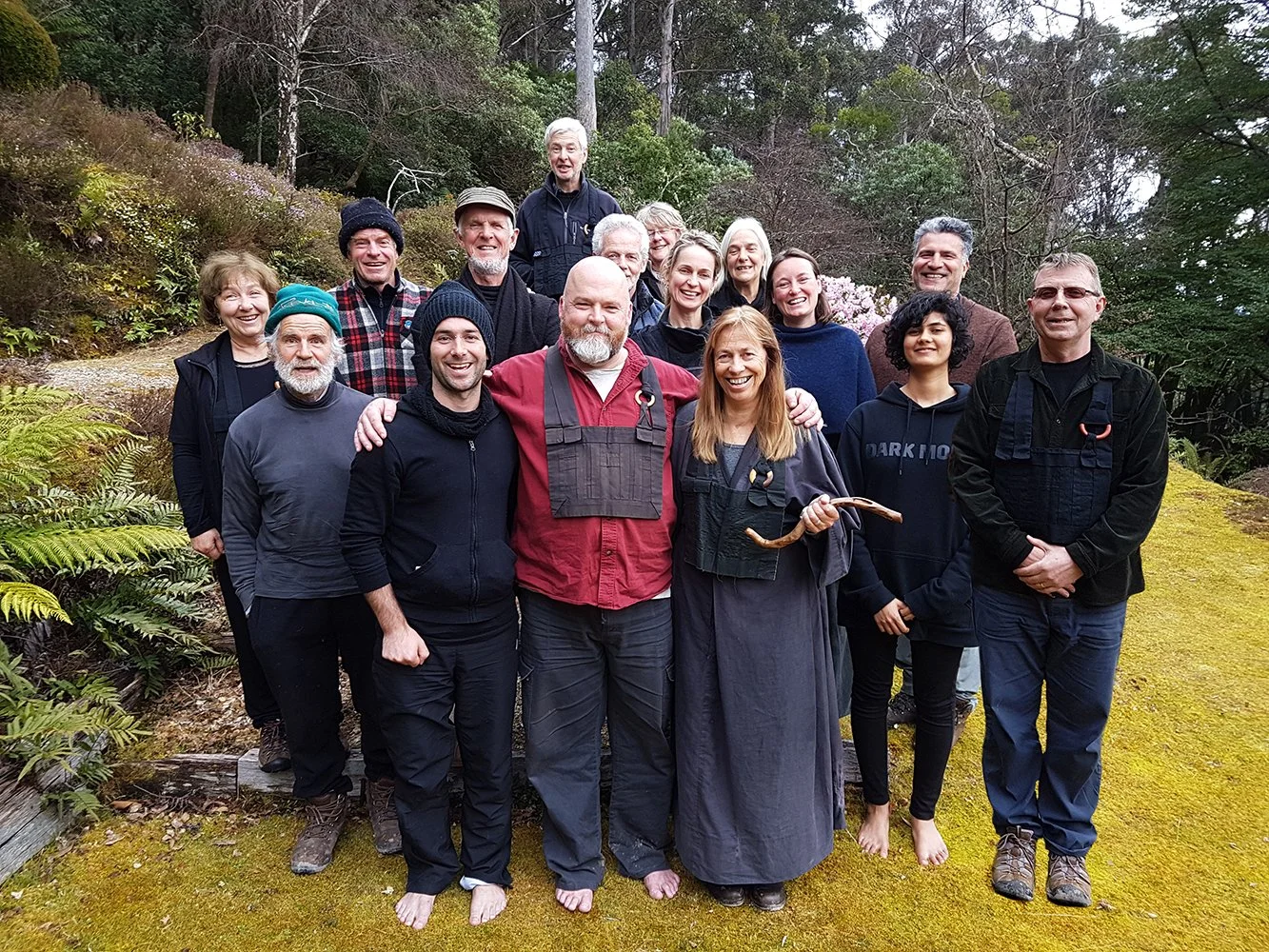What is Zen Meditation?
Zazen, or seated meditation, is fundamental to Zen practice. We practice zazen to realise exactly what the Buddha realised — the mind completely at rest in circumstances.
By Kynan Sutherland Roshi
Zazen takes many forms, depending on your body type, flexibility and needs. The traditional posture for zazen is sitting on the floor crosslegged on a round meditation cushion (zafu). However, kneeling on a bench, sitting on a chair or whatever is best for your body is just as welcome. If possible, the left hand should be nestled gently in the right, with thumbs lightly touching. The back should be kept straight and your shoulders should be soft. Then, with chin tucked in and eyes half-veiled, allow your body to relax and drop completely onto the earth.
If you are new to practice, a good place to start is counting your breaths. Silently embody “one” on the out-breath, followed by “two” on the next out-breath, all the way up to “ten”. If you notice your thoughts drifting at any point, return to “one.” The intention is not to cut off thoughts, but rather return with each breath to what is actually happening, before thoughts even arrive. By settling completely into each breath, a strong capacity for focus and attention is developed.
Zen also encourages shikantaza, or “just sitting”, a radical invitation to experience just what arises without counting, judgement or intention. The great poet of shikantaza, Dogen Zenji, put it this way: “Sit solidly in samadhi (serene, settled concentration) and think not-thinking. How do you think not-thinking? Nonthinking. This is the art of zazen. The zazen I speak of is not learning meditation. It is simply the dharma gate of enjoyment and ease.”
The Diamond Sangha tradition also places strong emphasis on koan inquiry. Koans are “public cases” that usually take the form of dialogues between student and teacher. Thousands of koans have been collected and studied over the years, most famously from Tang Dynasty China, although new ones are appearing all the time. Students explore a koan in collaboration with their teacher and discover, with patience and creativity, that they enjoy the same mind as these funny, brilliant and deeply compassionate ancestors.
Our form also includes sutra chanting, longer walks (yatras), dharma discussions, ritual meals and dharma interviews with a teacher (dokusan). You don’t need to be a Buddhist to enjoy all this, just someone with an open heart who longs to realise this one unrepeatable life.
You Tube Channel
Our YouTube Channel contains recordings of our teacher’s dharma talks, which have been recorded from various events we have held over the last several years



